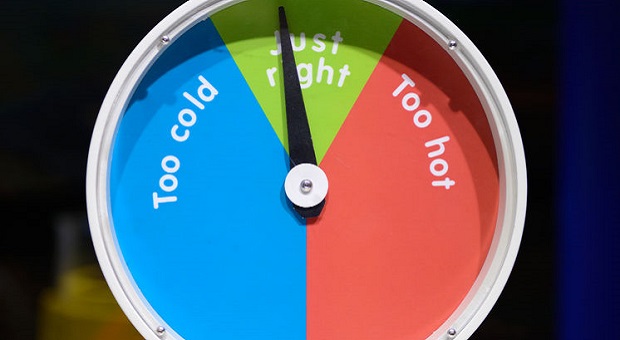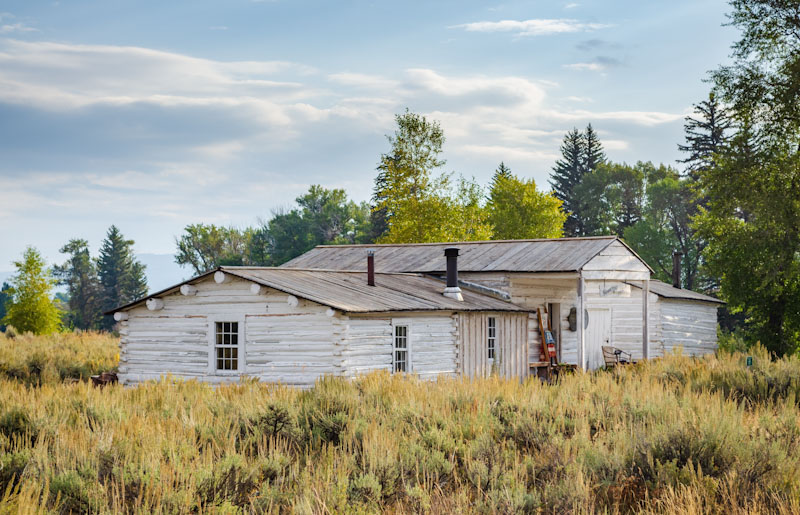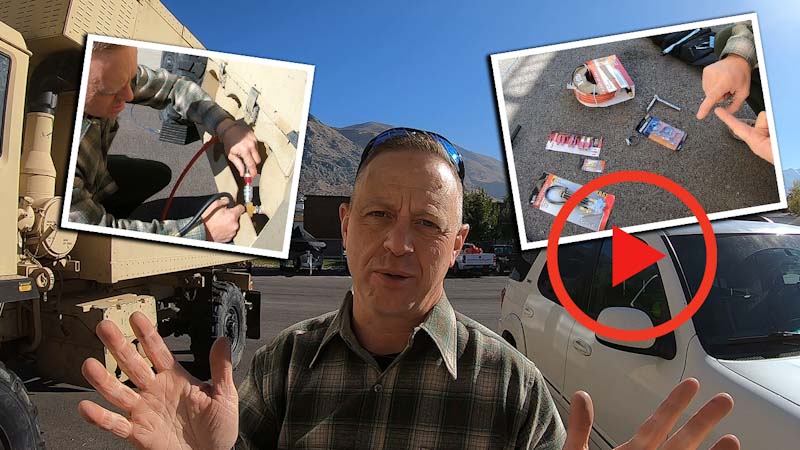When you install solar panels or wind turbines, you think you’ll never have to worry about paying an electric bill, let alone losing power during an ice storm.
On the other hand, solar panels will generate very little power on cloudy days and windmill blades can easily be frozen in place when snow, sleet, and ice hit.
Under these circumstances, you have to look into alternative power generation systems that will work when ice blocks off other options.
What Problems to Expect During Winter
You know that water can seep into even the tiniest cracks. From there, when the water freezes to form ice, it will expand and can easily break containers as well as any object within the container. As a result, most systems that haven’t been weatherproofed for ice conditions will be destroyed or require extensive repairs before they will work again.
No matter whether ice comes from sleet that freezes onto a surface or ice that begins to melt underneath the top layer and then freeze up again, it will form a sheet that will be very hard to break through. For example, if ice forms on a solar panel, or even the glass for a tin can solar heater, sunlight will not be able to get through the coating. More, you will find that removing ice from glass is a very time consuming occupation.
There are all kinds of power generation systems that take advantage of moving water. If you have managed to create a waterwheel in a small stream, the entire stream may freeze over for months on end. Even if there is some running water all the way at the bottom of the stream bed, it is not likely to be enough to keep the waterwheel going, let alone preventing it from freezing in place.
Over time, there are many cultures that have dealt with freezing cold temperatures for centuries. Even today, there are very few power generation systems developed specifically for these climates. As a result, you may find it harder than expected to find DIY systems that will work in icy conditions.
When it comes to alternative forms of generating power, many people turn to body power in order to generate at least small amounts of power. In many cases, these forms of generating power require walking, running, or other activities that take up a good amount of space outdoors.
If the temperatures are cold enough for there to be ice on the ground, you may not want to be outdoors for long periods of time, let alone engaging in strenuous activities just to generate electricity. While there are a few systems that can work indoors, they will still depend on the existence of an environment comfortable enough for you to work in.
You can use stationary bicycles outfitted with generating motors, but it is still advisable to take advantage of small scale thermocoupling systems that will require less work and effort on your part. Remember, your body is already under stress from trying to keep up with the colder temperatures. While you may feel that robust exercise will help you stay warm, it will also take more energy than expected. Unless you plan to double or even triple your caloric intake plus keep up with hydration needs, body powered systems should be onhand, but used as a last resort.
Next to using water, the sun, and the wind, earth batteries and earth based power generation systems are often the most popular. In many cases, these power generation systems have parts located well above the frost line, so these parts can still be broken apart or otherwise ruined by ice that gets into them or between parts that must remain together.
In addition, if you are using water based electrolytes to increase voltage from an earth battery, rest assured that the freezing conditions will make it even harder to generate power.
How to Turn the Odds in Your Favor
Did you know that the cold temperatures that generate ice can actually work in your favor? In these situations, even a small amount of heat can create fairly large changes in metals and other substances, which means that thermocoupling devices will be more efficient and generate more power than expected.
There are many ways to make use of thermocoupling, and here are some to consider:
- You can use Peltier junctions which cause electrons to flow based on the temperature difference between two metals touching each other. When temperatures are cold enough for ice to form, even a tiny bit of heat on one side will generate more current than usual because there is a larger difference between the hot and cold sections.
- Different metals such as copper and nitinol joined together can also generate current when placed together and heated in cold settings. As with the Peltier junction, more electrons will flow because of the increased difference in temperature.
- With the exception of water and rubber bands, most materials expand when heated and contract when cooled. When you combine some materials it is possible to heat some and cool others in such a way that motion is generated. For example, a rubber bands on one side of a wheel exposed to heat will contract while those on the cooler side will expand. This will cause the wheel to spin. As you may remember from other articles on generating power, once you can make something spin, you can also cause magnets to spin and then induce electricity in a wire or coil. Interestingly enough, the colder the temperatures are, the less heat you will need to create a large enough difference to create motion. This, in turn means that you may be able to choose metals that are more durable than rubber bands, or other combinations of materials that might not work as well in more moderate temperatures.
When it comes to social collapse scenarios, even the best fortified homestead will eventually capture the attention of people that have made their way out of the cities as well as anyone that may have survived from government agencies.
No matter who these people are, comfortable temperatures mean they will only arrive at your location sooner rather than later. Once they get there, they will also attempt to seize any power system that will work to their advantage.
On the other side of the equation, few, if any people are going to try and reach you in a terrain filled with ice and freezing temperatures. Aside from the difficulty associated with traveling in these conditions, they may well assume that you have no way to generate electricity. Since they can’t get electricity, they are likely to consider other targets that show more promise in this area, as well as others of interest to them.
Small Scale Systems
Thermocouple Pots
Aside from being useful for preparing meals, thermocouple pots will also generate electricity. You can use them as easily over camp fires as you can on top of a wood stove or kerosene stove. As long as you have some form of external heat, you can also use these pots to generate electricity.
As a DIY idea, you may want to experiment with taking strips of different kinds of metal to see if you can create your own thermocoupler. Once you find a useful and inexpensive pair (such as copper and nitinol wire), simply attach them to the bottom of the pot and attach wire leads so that you can gain access to the electricity generated by the metals.
Rubber/Metal Band Wheels
Unfortunately, there is no such thing as a pre-fabricated kit or device that operates based on rubber band wheels or engines. That being said, these devices are not especially difficult to create. You can start off with old bicycle wheels and rubber bands, then gradually work your way up to using different metals to replace the rubber bands.
Just remember that if you are going to use metals, it is the source of cold that will cause the metal to contract instead of the heat that creates the wider temperature difference on the other side of the wheel. Here is a video that can help you learn more about rubber band engines:
Video first seen on Adam Micolich
A Note About Coil Designs
Once you know how to make this wheel spin, you can progress to the next level, which is adding magnets to the wheel and then building coils of wire to generate electricity. It should be noted that many people believe that coils should be located in the center of a shaft and spinning, and that magnets should be stationary; as they are in conventional motors.
From a commercial perspective, this makes perfect sense because this system generates more electricity and may take up less space. The creation of a centralized coil can take a lot of work and requires a good bit of precision that may be very hard to come by in the post-crisis world or in a situation where you only have basic tools to work with.
Even if you make a rudimentary coil winder, you will still need a spool of perfect coil to wind from and plenty of time to make the windings. You will also be stuck with just one coil design as opposed to being able to work with torroids or other designs that may generate more power using smaller amounts of wire.
Overall, you will find that making small coils from “junk wire” is much easier when the coil does not have to be wound around a shaft. Even if the coil is not perfectly balanced, it will not ruin bearings or cause the motor to disbalance.
You will also find it much easier to build coil modules, which can be connected together to generate more power. In conjunction with that, if you have two 6 foot lengths wire, you can build two of these coils and never need to worry about how you are going to get another shaft from the main driving device. On the other hand, if you are building a centralized coil, you cannot join two pieces of wire and expect the coil to work.
Gravity Engines
As with rubber band engines, devices driven by gravity will generate a spinning motion that can be used to induce electricity in a coil. In this case, you can use pulleys, gears, and even levers attached to weights to cause a blade to spin. These devices can be used easily enough indoors as long as you have enough room for the weights to fall.
Stirling Engine
When it comes to fascinating objects that produce motion based on temperature changes, few can rival stirling engines. In this case, you can purchase pre-fabricated engines that will begin turning with as little as a 20 degree difference between the base and the rest of the engine. Once you have a small Stirling engine in hand, it is also possible to make your own engines in larger sizes. Just remember that you will still need to add more thermocoupling material into the base, and then you will need to accommodate magnets so that you can generate electricity.
Indoor Container Earth Battery
Even though you will not be able to use earth batteries and electrolyte solutions in larger outdoor field settings, you can still use small containers of dirt and electrolyte indoors. As long as you are in a room with temperatures above freezing, you can still use ice tray based earth batteries to generate at least 12 volts of power. That being said, since you must also use two different metal types to generate electricity in this system, it may still be better to use them in a thermocouple system.
Large Scale Systems
Deep Underground Water Resources
When it comes to large scale generation system that will work in a homestead setting, just about anything that can be used outdoors will fail under freezing conditions. On the other hand, no matter how cold the temperatures may be above ground, the temperatures will be considerably warmer below the frost line.
No matter whether you are in Alaska or Florida, the temperature of deep caves and underground streams is about the same. This temperature also happens to be well above the temperature that water freezes at. Surprisingly enough, there are deep underground sources that are far more extensive than those above ground. In fact, if you have a well on your property, there is also a very good chance that an underground stream feeds it, or you have actually tapped into it.
Once you locate a source of underground water, it may be worth your while to see if you can set up an array of pipes or even a waterwheel to tap the water’s motion. If you do not find moving water, it may also be possible to bury pipes below the frost line, and then use a series of gravity engines and Archimedes screw to move the water around in the pipes.
Remember, as long as the pipes are buried deeply enough below the frost line, you will not have to worry about ice forming in the pipes. As with any other power generation system, once you can create motion, you can harness that motion and turn it into electricity.
Wood Stove or Other Heating System Thermocouplers
Consider a situation where you have a wood stove or other large object that generates a good bit of heat. If the temperatures are freezing, chances are you will be already using plenty of fuel to keep those heating systems running around the clock.
Rather than simply let all that heat escape into a basement that you don’t use, you can simply add thermocouple blocks to the sides of the stove. Peltier junctions and similar devices will work no matter whether the heat comes from a bunsen burner or the side of a wood stove. By the same token, you can also use metal pairs to build larger thermocoupler sections at a lower cost.
Diesel or Biofuel Generators
Over the last few years, preppers have avoided conventional gasoline generators because these devices are of little use when gasoline is not available. On the other hand, diesel or biofuel generators may still be of use as long as you know how to make fuel for them.
For example, you can make biodiesel from kitchen scraps and many other kinds of organic material. In this case, you will more than likely need to store up fuel created during the warmer months so that you can use it during times when ice is on the ground.
When choosing a diesel generator, make sure that it is specially designed to work in freezing temperatures. Even though diesel engines are known to be balky in colder temperatures, well over 90% of electricity in rural Alaska is actually generated by diesel generators. Therefore, if you want to use one of these devices for your homestead, you should be able to do so.
Alternatives to Electricity
Regardless of the temperature or the amount of ice in your area, you will still need to cook, bathe, and go about other routine activities. As with times in the past, there are all sorts of things you can do without electricity. While you may already be aware of wood stoves, kerosene heaters, and other methods, here are a few things that may have escaped your attention:
- In some parts of Siberia, the townships generate heat for the surrounding houses using steam boilers. You can also use smaller boiler systems to run hot water through radiators in your home in order to keep the building warm and generate hot water at the same time. It should also be noted that wood stoves can be used to heat up boilers. You do not need an electrical ignition system, let alone a gas or oil furnace to have a steam boiler.
- In Norway, a number of passive insulating systems are used to prevent heat from escaping the building. Aside from covering windows and doors, they also cover the walls. Even if you use a layer of paper, it will help keep more warmth inside each room. Just make sure that you do not put paper or other flammable materials in areas where sparks or excess heat can cause a fire.
- Don’t forget to open curtains and drapes on sunny days to let heat from the sun in. Once the sun goes down, close the curtains and drapes so that the heat does not escape.
- Use tin can solar heaters on sunny days to introduce hot air into your home. You may also want to experiment with using coils of metal pipe to heat up water and then run it through radiators throughout your home.
- If you have plenty of sunlight, you can use portable solar cookers and other solar heating devices for cooking. Don’t forget that portable systems will need to be brought back indoors so that they do not become useless because ice has built up on them. When choosing a solar cooker for freezing temperatures, you will need to focus on being able to insulate the outer wall of the box as much as possible. Non-flammable foam or house insulation can work well. You can also use black paint on the inside of the cooker to help heat build up faster.
There is no question that freezing temperatures can pose challenges for every aspect of survival even if a major social collapse has not occurred. You can still find ways to generate electricity even when the ground is covered in ice and many of the most common off grid power systems fail to work.
While it may take a bit more DIY skill and willingness to think outside of conventional off gridding, you can still live comfortably and enjoy all the benefits of electricity in freezing weather.
 This article has been written by Carmela Tyrell for Survivopedia.
This article has been written by Carmela Tyrell for Survivopedia.









Bob | February 2, 2016
|
We are full timers in a 5th wheel RV. What is the best way to generate electricity in a cold climate without having to depend on a fuel source for a generator?
Pingback:Off-Grid Winter: How To Generate Power On Ice | NewZSentinel | February 2, 2016
|
Pingback:Off-Grid Winter: How To Generate Power On Ice | Bsn Global News | February 2, 2016
|
Pingback:Survival News 02/03/16 | Survival Pulse | Daily Survival & Prepper News | February 3, 2016
|
Pingback:Off-Grid Winter: How To Generate Power On Ice | TheSurvivalPlaceBlog | February 4, 2016
|
Pingback:10 Things To Replace Power During A Blizzard | Survivopedia | February 5, 2016
|
Pingback:10 Things To Replace Power During A Blizzard | Prepper's Survival Homestead | February 5, 2016
|
Pingback:10 Things To Replace Power During A Blizzard | NewZSentinel | February 5, 2016
|
Pingback:10 Things To Replace Power During A Blizzard | | disasterdefense.us | February 5, 2016
|